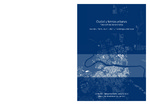Forma urbana y tipos arquitectónicos en los albores de la Modernidad. Las huellas del régimen absolutista español en la Galicia Atlántica: el caso de Sada

Use this link to cite
http://hdl.handle.net/2183/21214Collections
- Investigacion (ETSAC) [511]
Metadata
Show full item recordTitle
Forma urbana y tipos arquitectónicos en los albores de la Modernidad. Las huellas del régimen absolutista español en la Galicia Atlántica: el caso de SadaAlternative Title(s)
Urban form and architectural types at the Modernity dawn. The traces of the Spanish absolutist regime in Galicia Atlántica: the case of SadaDate
2018Center/Dept./Entity
Universidade da Coruña. Departamento de Proxectos arquitectónicos, urbanismo e composiciónCitation
Martínez Suárez, Xosé Lois; López González, Cándido (2018). Forma urbana y tipos arquitectónicos en los albores de la Modernidad. Las huellas del régimen absolutista español en la Galicia Atlántica: el caso de Sada. En : Ciudad y formas urbanas. Perspectivas transversales. II Congreso Internacional ISUF-H Zaragoza 2018, vol. 1. Zaragoza: Universidad de Zaragoza, Institución Fernando el Católico, pp. 177-188.
Abstract
[Resumen] La proliferación de cartografía militar en los primeros años del siglo XVII nos sitúa ante el nuevo rol a jugar por el territorio atlántico en la estrategia imperial de control del Mar Océano. Y dentro de aquel, hacia 1674, en el ámbito conformado por el romano Portus Magnus Artabrorum,se implanta en Sadapara abastecimiento de
los buques de la Armada española la pieza más importante de Galicia en el siglo XVII: la Fábrica de Jarcia y Lonas. Un enclave fabril que no pasa desapercibido en los mapas de las potencias militares europeas.
La fábrica estará protegida por las instalaciones militares del Castelo de Fontán y la Batería da Corveiroa. Estas edificaciones especializadas serán puntos fuertes en el nuevo orden territorial. La necesidad de habitación para una importante concentración de trabajadores dará lugar al núcleo más compacto y de mayor tamaño de la península Oleiros-Sada, en el que los tipos-base de edificación obrera permanecerán como referencias durante los siglos posteriores. Es a lo largo de este proceso de "construcción" de la nueva mirada en el que, a partir de la introducción de la idea de límite, pretendemos comprender las transformaciones sufridas por las
iniciativas impulsadas por las monarquías absolutistas entre los siglos XVII y XIX en la Galicia Atlántica. [Abstract] The large number of military y cartography in the early years of the 17th century places us in front of the new role to play for the Atlantic territory in the imperial strategy of Mar Océano control. And inside that one, towards 1674, in the area formed by the Roman Portus Magnus Artabrorum is implanted in Sada to supply the ships of the Spanish Navy the most important piece at Galicia in the 17th century: the Fábrica de Jarcia y Lonas. A piece that does not unnoticed in the maps of the European military powers. The factory will be protected by two military installations: Castelo de Fontán and Batería da Corveiroa. These specialized buildings will be strong points in the new territorial order. The need of a home for a important concentration of workers will give rise to the more compact and larger village of peninsula Oleiros-Sada, in which the base-types of worker housing will remain as references during subsequent centuries. In this process of "construction" of the new look, and from the introduction of the idea of limit, we intend to understand the transformation of initiatives adopted by the absolutist monarchies between the 17th and 19th centuries in Galicia Atlántica.
Keywords
Fábrica
Habitación obrera
Forma urbana
Sada, A Coruña
Galicia Atlántica
Factory
Urban form
Habitación obrera
Forma urbana
Sada, A Coruña
Galicia Atlántica
Factory
Urban form
ISBN
978-84-17358808





